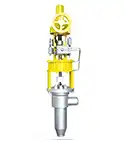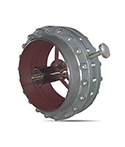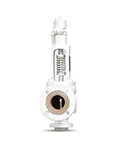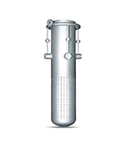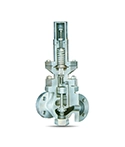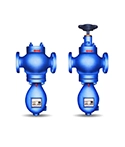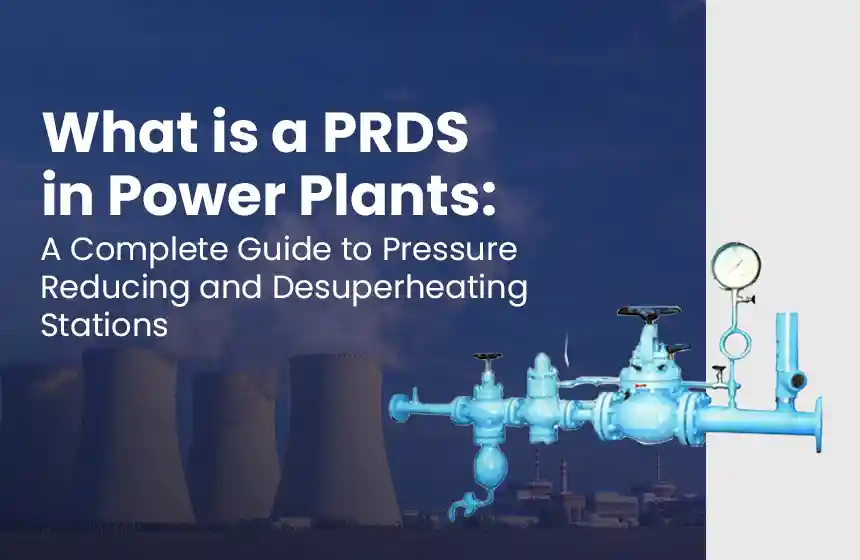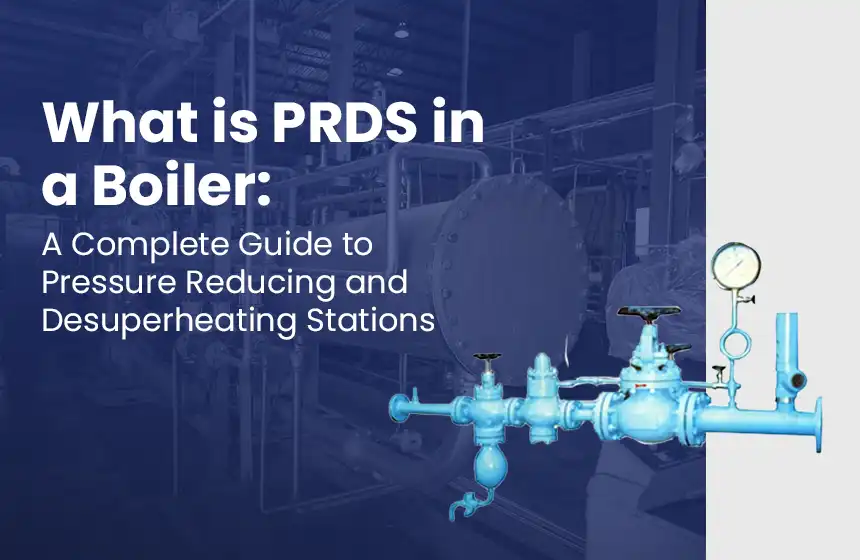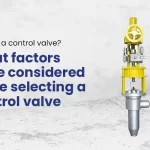
What is a control valve? What factors to be considered while selecting a control valve
July 11, 2025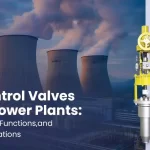
Control Valves in Power Plants: Types, Functions, and Applications
September 2, 2025
What is a control valve? What factors to be considered while selecting a control valve
July 11, 2025
Control Valves in Power Plants: Types, Functions, and Applications
September 2, 2025Boiler Safety Valves: Importance, Installation Guidelines & Maintenance Tips
In a boiler system, safety is non-negotiable. Even a single small failure can cause significant damage. Here we’re not talking only about equipment damage, but it can also cause damage to human life and property.
Here is where boiler safety valves come into the picture. These valves prevent pressure from rising beyond safe limits. So, whether you're a plant operator, maintenance engineer, or some overseeing industrial operations, understand the role and upkeep of the safety valve. In this blog, we will discuss the importance of boiler safety valves, how to install them properly, and what boiler safety relief valves are.
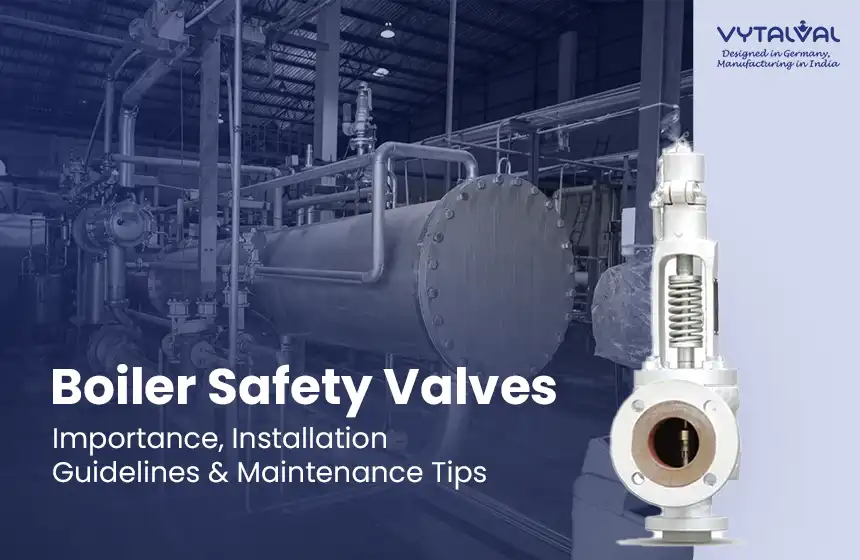
What are Boiler Safety Valves?
A boiler safety valve is a safety device that protects a boiler from dangerous pressure build-up. When the steam pressure inside the boiler becomes higher than the safe limit, the valve opens automatically to release the extra steam. Once the pressure drops back to normal, it closes again. This simple action prevents serious damage or explosions, keeping both the equipment and people safe. Every boiler is required to have a safety valve, as per safety rules followed worldwide.
Why are Boiler Safety Valves Important?
Boiler safety valves are very important devices used in boilers to keep them safe and reliable. A boiler works under high pressure to produce steam. If the pressure inside rises too much, it can become dangerous and even cause explosions. Safety valves protect against this risk by releasing extra steam whenever the pressure goes beyond safe limits.
1. Prevents Overpressure - They automatically release excess steam when pressure gets too high, keeping the boiler within safe operating limits.
2. Protects the Boiler and Equipment - High pressure can damage the boiler, pipes, and connected machines. Safety valves reduce this risk and help equipment last longer.
3. Keeps Workers Safe - By controlling pressure, safety valves prevent dangerous accidents and protect people working near the boiler.
4. Avoids Production Loss - A sudden boiler failure can stop production. Safety valves keep the system running smoothly and reduce downtime.
5. Follows Safety Rules - Industries must use safety valves as per safety codes and standards. This ensures legal compliance and safe operation.
How to Install Boiler Safety Valves?
A boiler works under high pressure, and if that pressure goes beyond the safe limit, it can be dangerous. To prevent this, every boiler is fitted with a Boiler Safety Valve. This valve automatically releases extra pressure and keeps the system safe. Installing it correctly is very important for smooth and safe boiler operation.
1. Correct Positioning
Always install safety valves vertically. If it is positioned inclined or in horizontal, it can affect the spring mechanism and valve response time.
2. Avoid Blockage
Never install any valve or obstruction between the boiler and the safety valve. It ensures an immediate response when pressure exceeds the set limit.
3. Use the Short and Direct Connection
Connect the safety valve to the boiler using the shortest possible pipe length. If you use a long or complex pipe, it can cause a pressure drop or delay valve actuation.
4. Check Discharge Path
Make sure that the discharge path is free from obstructions and properly vented. You can use the proper piping to direct the steam to a safe location.
5. Follow Manufacturer Recommendations
You must install safety valves based on the manufactuer's instructions about torque settings, flange connections, and installation torque.
Function of Boiler Safety Valves
The primary function of a safety valve is to prevent excessive pressure build-up inside the boiler. Here’s how it works step by step:
-
Monitoring Pressure – The valve is designed and set to open at a specific pressure limit.
-
Releasing Excess Steam – If the boiler pressure goes beyond that limit, the valve automatically lifts and releases steam or gas.
-
Restoring Safe Pressure – Once the pressure drops to a safe level, the valve closes again without affecting the normal operation of the boiler.
In short, Boiler Safety Valves act as the last line of defense against unsafe pressure levels.
Boiler Safety Valves Types
Boiler Safety Valves come in different types, each designed to suit specific boiler operations and safety requirements. Here are the main types explained in simple terms:
1. Spring-Loaded Safety Valve
This is the most widely used type. It has a spring that holds the valve shut. When boiler pressure goes beyond the set limit, the spring lifts, releasing steam to reduce pressure, and then closes automatically.
2. Lever Safety Valve
Operated with a lever and weight system, this type is mostly used in low-pressure boilers. The weight controls when the valve opens, making it simple but effective.
3. High-Lift Safety Valve
Opens quickly and fully when the pressure reaches the limit, allowing a large amount of steam to escape in a short time. This helps prevent sudden boiler damage.
4. Dead-Weight Safety Valve
Uses a stack of weights to keep the valve closed. When the pressure is high enough to lift the weights, steam is released. It’s an older design but still used in certain stationary boilers.
5. Pilot-Operated Safety Valve
Uses a small pilot valve to control the main valve. It’s very precise and is ideal for high-pressure and large-capacity boiler systems.
6. Balanced Safety Valve
Designed to work well even when there are changes in backpressure, making it reliable in fluctuating operating conditions.
7. Pop-Type Safety Valve
Fully opens as soon as the set pressure is reached, releasing steam quickly and then shutting once pressure drops. It’s great for avoiding sudden pressure build-up.
Some Maintenance Tips for Boiler Safety Valves
A boiler safety valve is a vital safety device, but it will only work well if you take care of it. Even a perfectly installed valve can fail without regular maintenance. Here’s how to keep it reliable and long-lasting:
1. Test the Valve Regularly
Do regular pop tests to make sure the valve opens at the correct pressure. Follow the schedule given by the manufacturer or safety rules.
2. Keep It Clean Inside
Dirt, rust, or steam deposits can stop the valve from working properly. Clean the inside parts at regular intervals using safe cleaning methods.
3. Check for Leaks
If you see steam leaking when the valve is closed, the seat might be worn or damaged. Fix this quickly to avoid bigger problems.
4. Lubricate Moving Parts
If the valve has parts that move, keep them lubricated so they don’t stick or respond slowly.
5. Replace Old Parts
Springs, gaskets, and seats can wear out over time. Change them immediately if they show signs of damage.
6. Maintain a Service Log
Keep a simple log of tests, repairs, and inspections. This helps you track the valve’s condition and follow safety regulations.
What are the Common Issues With Boiler Safety Valves?
Here are some common issues with boiler safety valves.
Sticking valves – This is caused because of rust or improper lubrication.
Incorrect Set Pressure – It can result from tampering or spring fatigue.
Continuous Leaking – It indicates damage inside the boiler.
Delayed Opening – This occurs due to incorrect installation angles or obstructed connections.
Most of these issues can be avoided with regular maintenance and professional inspections.
Final Thoughts
Boiler systems are crucial for industrial operations, and their safety must not be compromised. Using a well-functioning boiler safety valve is the best protection that you can take against overpressure and potential accidents. To ensure optimal performance, keep the following in mind: select the correct boiler safety valve type, follow the installation procedure, and perform regular maintenance. It will let you enjoy complete safety and system efficiency. In short, whether you're dealing with boiler safety relief valves or pilot-operated safety valves, the main goal is to keep the system and the people operating it safe.
For industries seeking high-quality components, collaborating with reputable Control Valve Manufacturers in India, such as Vytal Control, is essential. They offer high-performance valves built to meet international safety and quality standards, which ensures your operations remain smooth and hassle-free.
FAQ
1. What is a boiler safety valve and why is it important?
A boiler safety valve is a small but essential device that keeps a boiler safe by releasing steam when the pressure inside gets too high. If the pressure rises beyond the set limit, the valve opens automatically, lets out the extra steam, and then closes again once the pressure returns to normal.
This is important because it prevents dangerous situations like boiler damage, system failure, or even explosions. In simple terms, the safety valve acts like a “pressure guardian” — protecting the boiler, the workplace, and the people around it, while also helping the boiler last longer and work more efficiently.
2. What are the types of safety valves in boilers?
Safety valves in boilers are important devices that protect the system from dangerous pressure build-up. They automatically release steam when the pressure goes beyond a safe limit. Here are the main types:
- Spring-Loaded Safety Valve – Works with a strong spring that keeps the valve shut until the set pressure is reached. When pressure is too high, the spring compresses, and steam is released.
- Lever-Loaded Safety Valve – Uses a lever and a weight to keep the valve closed. When pressure rises above the set limit, the lever lifts, allowing steam to escape.
- High-Lift Safety Valve – Opens wider than normal valves so that more steam can be released quickly, which is useful for large boilers.
- Low-Lift Safety Valve – Opens only a small distance, releasing steam at a slower rate, suitable for smaller capacity systems.
- Balanced Safety Valve – Designed to work smoothly even if there is backpressure in the exhaust line, ensuring accurate operation.
- Proportional Safety Valve – Opens gradually as the pressure increases, which helps avoid sudden drops in boiler pressure.
Choosing the right type of safety valve depends on the boiler’s size, pressure level, and application. This ensures safe operation and long life of the boiler.
3. What is the function of the safety valve?
A safety valve is like a pressure “guardian” for your equipment. Its job is to automatically release extra steam, gas, or fluid whenever the pressure inside a system goes beyond its safe limit. This prevents dangerous situations such as equipment damage, leaks, or even explosions. Once the pressure drops back to a safe level, the valve closes on its own and the system continues to run normally. In simple terms, it’s a built-in protection device that keeps both the machinery and people safe.


